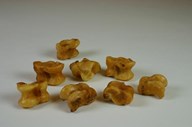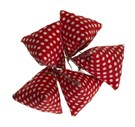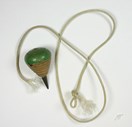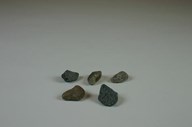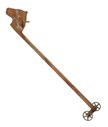Moving toys
While discussing moving toys from different times and cultures, students can be given the opportunity to explore the ways they push and pull toys, and how this affects the movement of those toys.
Learning outcomes
In this activity children will:
- state the difference between push and pull
- work out how a push or pull can make an object move
- respond to and pose questions about familiar objects and events.
Engage
Using the image gallery below, discuss the following questions with your students:
- Do these toys look like any that you have at home?
- Where do you think these toys might be from?
- How old do you think these toys are?
- What are some interesting things about these toys?
- How you would play with each of these toys?
- What would you need to do to make each toy move?
- What are some ways that you would sort these toys into different groups?
Explore
- What is a push? What is a pull? What is a twist?
- Do any of these toys need to be pushed or pulled when played with?
- Do we need to twist any of these toys when playing with them?
- Explain how we would we start the movement of each of these toys.
- For each toy explain how, once it’s moving, it can be slowed down or stopped?
Explain
Some of the photographed toys are very similar in their use but originate from very different cultures. This may indicate that children from different cultures have some common ways of playing together. Students should be encouraged to hypothesise about the origin of each of the toys shown.
The pictured toys may be classified as push and pull toys. While discussing the origins of each toy, introduce or reinforce the concept that movement can be started or stopped when we apply a push or pull to our toys. A push or pull can also speed up things, slow down or change their direction.
Some toys need to be twisted to begin movement. Discuss that a twist is a combination of a push and pull.
Elaborate
- Students may supply a toy from home that needs to be either pulled or pushed. When the toys are collected, sort the toys into groups according to the students' ideas. During these discussions, have the students decide which toys need to be pushed and which need to be pulled.
- If an object is moving, this is evidence that a pushing or pulling force has been applied to that object. Explore as a class how we can tell if an object has had force applied to it.
Evaluate students' understanding
- Using construction materials available in the classroom, instruct students to build a device that needs to have a push or pull applied to make it work. Students may offer a verbal explanation to the class about how they can play with this toy to start and stop its movement. Encourage the students to use the words push and pull in their verbal descriptions.
